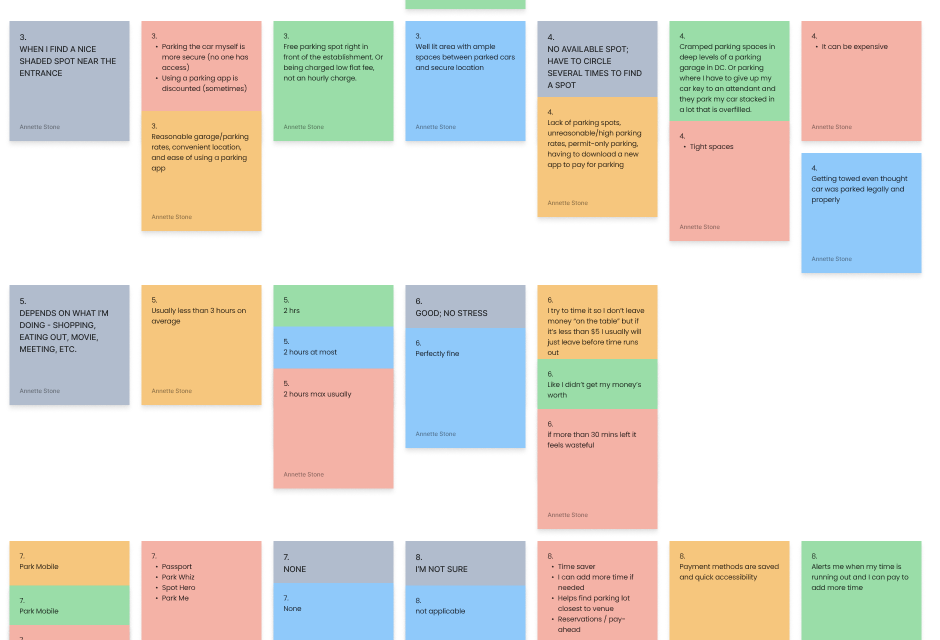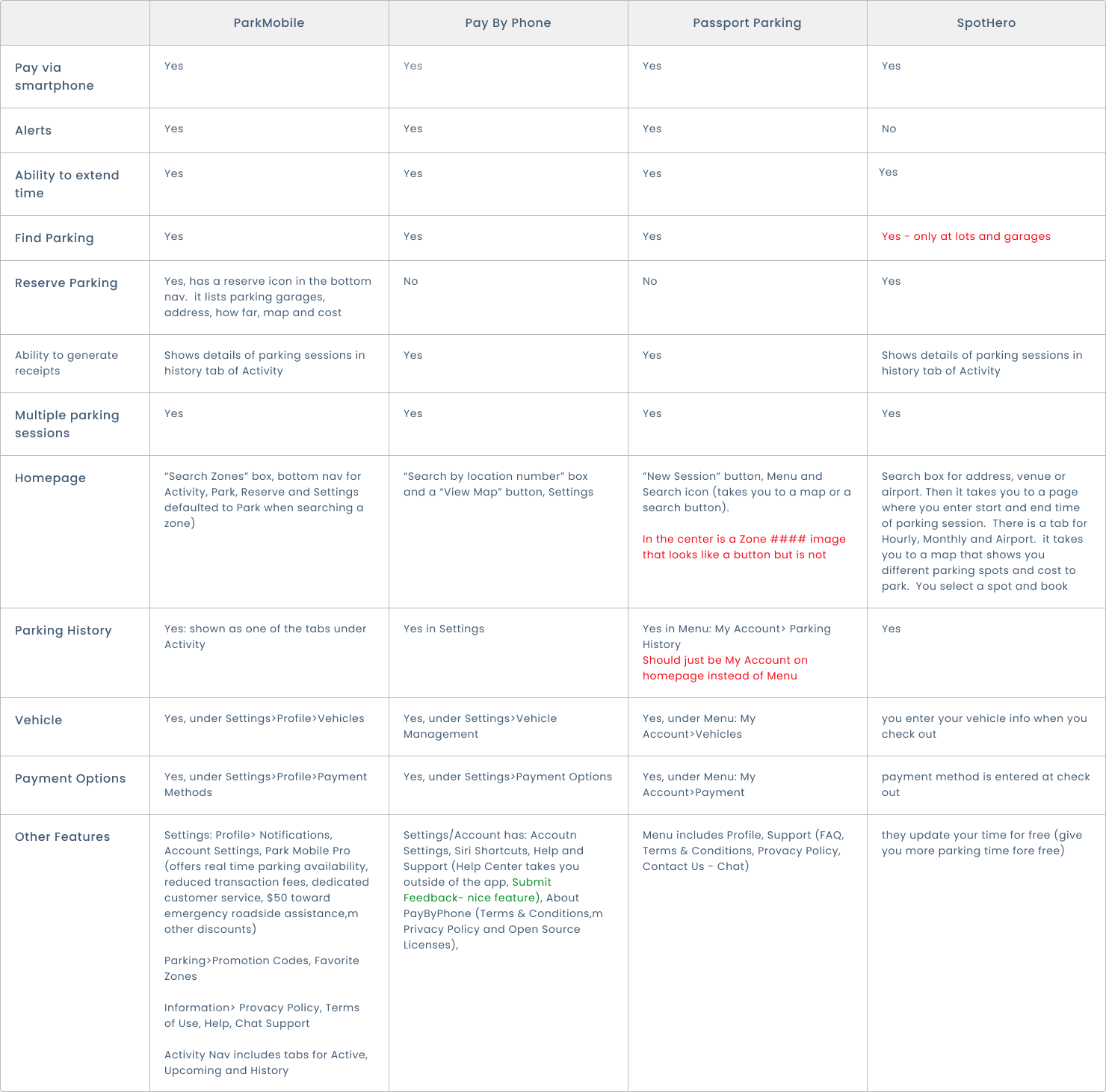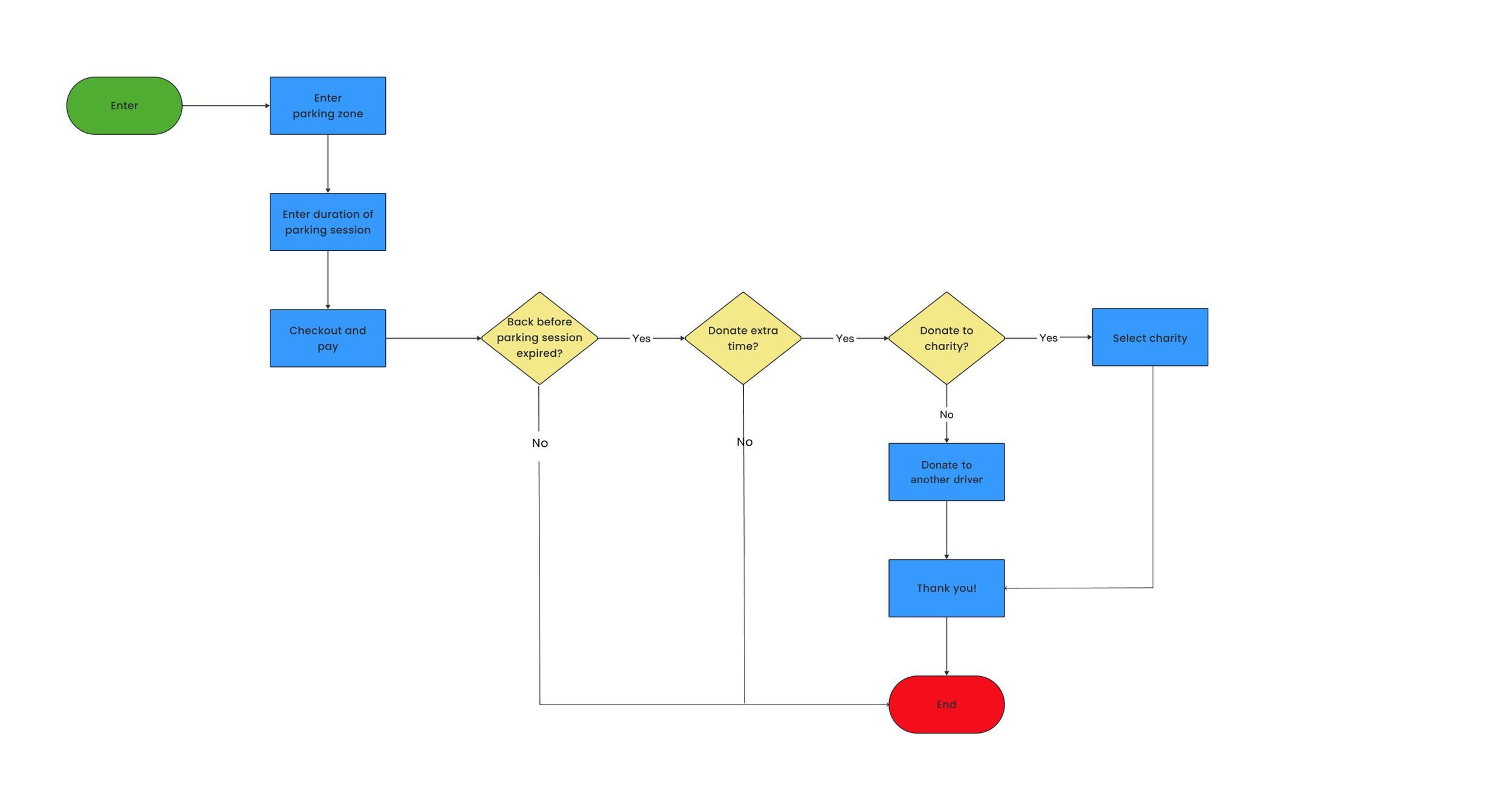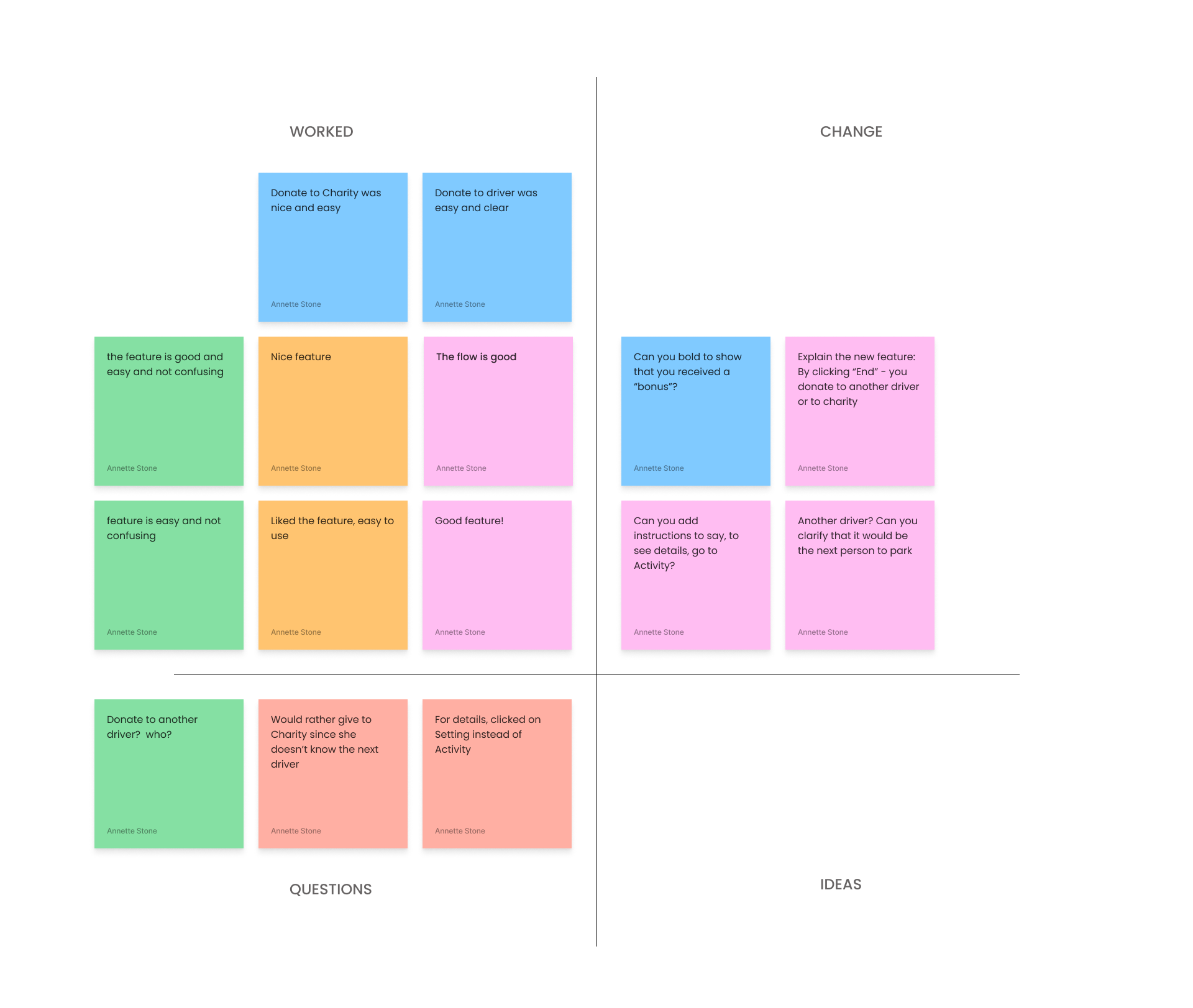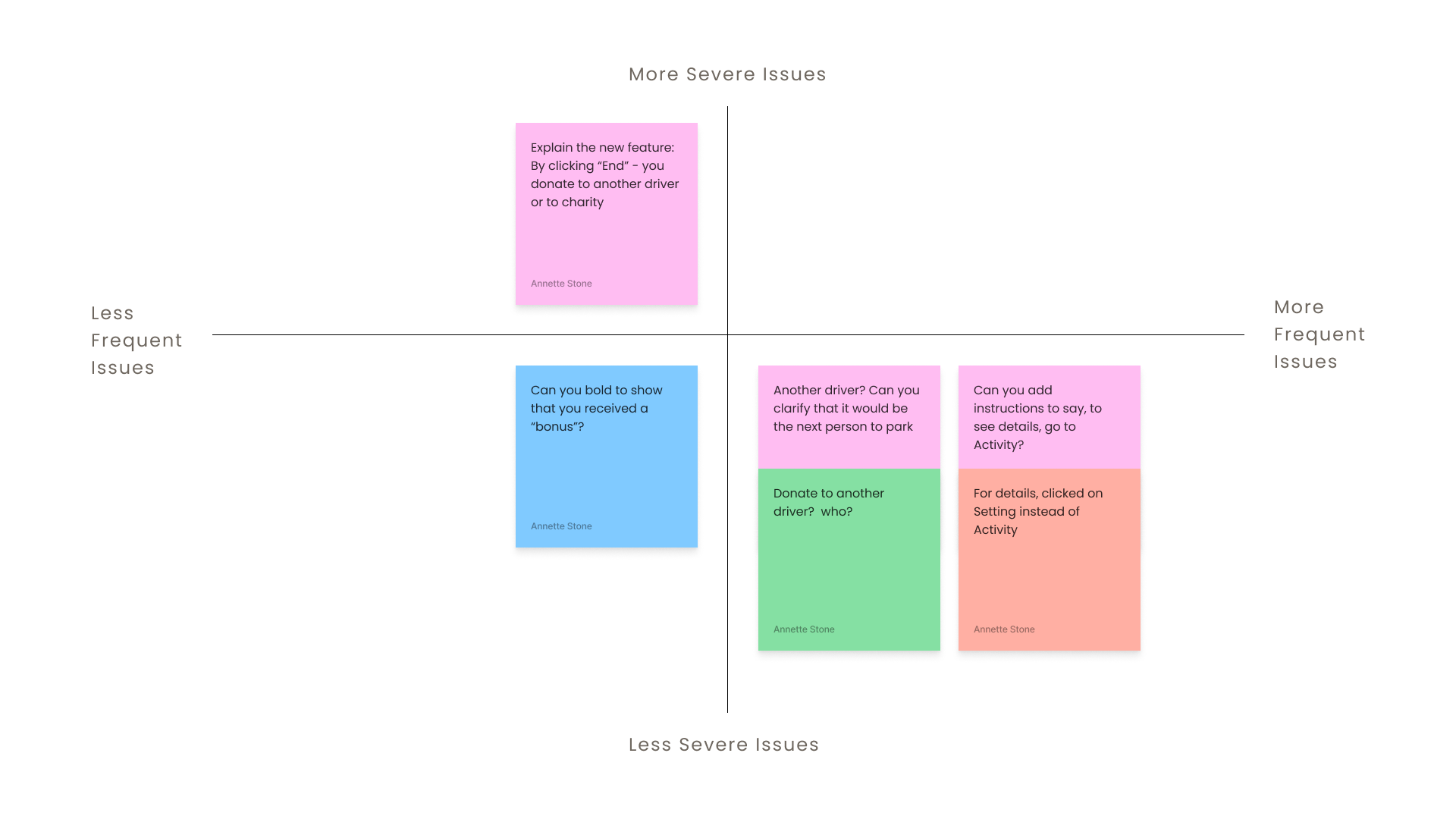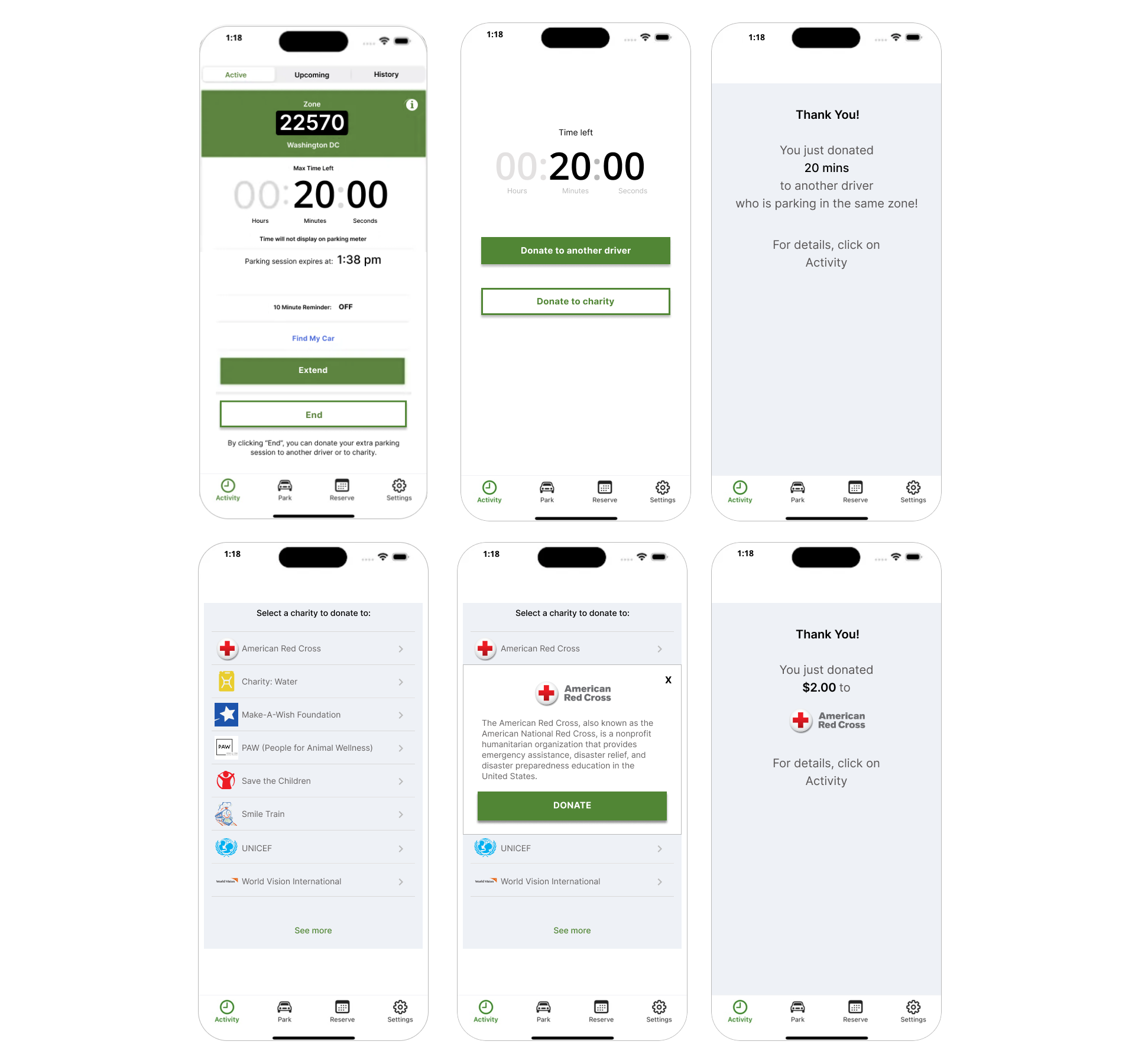Case Study: ParkMobile
CONTEXT
Nowadays, the process of paying for parking has become so much more convenient for drivers due to the utilization of parking mobile apps.
Currently, ParkMobile is the most widely used app for parking. With this app, the process is a breeze. You simply enter your designated parking zone, choose your desired parking duration, (confirm your vehicle choice if you have stored multiple vehicles within the app), and prepay for your parking. Then you are set to commence your parking session.
CHALLENGE
We cannot terminate our parking session earlier than the time that we paid for. Therefore, a sense of dissatisfaction may arise if we leave before our parking session expires, as we have essentially paid for a duration exceeding the actual time the vehicle was parked.
GOAL
Before the parking app days, we used to print out parking receipts or vouchers that we would display on our windshield to serve as evidence of our parking payment. On occasions, we have returned to our parked vehicle only to find that we still had unused time on our receipt or voucher. If we were feeling generous, we would offer this extra time to other drivers who were parking, allowing them to utilize the extra time we had on our voucher.
Imagine, if this same capability can be integrated into a parking app? To take it a step further, what if we can donate the extra parking time to a charity of our choice? This would work much like the “round up” concept that is widely popular where purchase payments are rounded up and the difference between the actual cost of the purchase and the rounded up sum is directed towards charitable donations.
DELIVERABLES
User Research Interviews and Findings
Comparative & Competitive Analysis
Personas
User Workflow
High-Fidelity Mock-ups and Prototypes
Usability Tests and Findings
Final Wireframes
USER RESEARCH INTERVIEWS
In order to gain a deeper understanding of individuals’ attitudes towards parking their vehicles, I conducted user research interviews with 6 participants. My objective was twofold, first was to learn about their parking experiences and determine their emotions related to this activity. The second is to explore their feelings towards the prospect of giving back to the community or donating to charitable causes. The participants responded to a set of 12 questions designed to address these objectives.
AFFINITY MAPPING
I used Affinity Mapping to synthesize the results from the User Research Interviews. This approach allowed me to identify patterns and themes within the participants’ responses to the interview questions.
A pattern of reluctance to overpay for parking and a tendency to seek out free parking options before opting for a paid spot was evident. It also revealed a common sentiment of discontent among the participants when they realized they had paid for more time than they actually used for parking.
The mapping exercise highlighted a significant and unanimous inclination towards supporting charities and giving back to the community.
COMPARATIVE & COMPETITIVE ANALYSIS
To gain insight on the functionality of other parking apps, I conducted a Comparative Analysis involving 3 direct competitors of ParkMobile. None of the other apps, provided a feature that allowed the driver to end the parking session prior to the expiration time of the parking session.
PERSONAS
I developed a pair of personas to represent my intended audience. The first is a married man in his early 30’s who is a father of 2 young children. He works long hours in the office during the week and dedicates his weekends to quality time with his family. He leaves for work early to secure a good parking spot. Due to his work demands, he frequently pays for longer parking sessions than necessary. He believes in giving back to the community so he regularly donates to charitable causes.
The second persona is a young woman in her mid-20’s. She is single and she enjoys spending time with her friends and her boyfriend. She likes to walk so she is fine parking at a distance away from the store where she works. The high cost of parking in the city where she works causes her to feel dissatisfied when she leaves before her parking session is over. She likes to participate in volunteer work in her spare time.
USER WORKFLOW
I developed a User Flow as a tool to help me visualize how the users will navigate and interact with the app’s new feature. This process helps ensure that the design is intuitive and user-friendly.
HIGH-FIDELITY WIREFRAMES AND PROTOTYPE
Given the limitations of time and the straightforward user interface of the current app, I was able to proceed directly to creating high-fidelity mock-ups and prototypes.
USABILITY TESTING
To evaluate how the users will navigate the new feature of the existing app, I had the participants complete 3 tasks:
1. Donate their extra parking session to another driver
2. Donate their extra parking session to a charity
3. Initiate a parking session to observe the interface where you’ve been granted additional parking session from another driver
The Usability Testing allowed me to evaluate the level of intuitiveness of the design of the new feature. Through this process I was able to observe how the users interacted with and navigated the new feature as they completed the tasks that were assigned to them.
FEEDBACK GRID
Using the Feedback Grid, I was able to organize the results of the Usability Testing into distinct categories of what worked, changes, questions and ideas.
The functionality of the new feature appears to be efficient and straightforward as there are no issues related to it.
The results of the Usability Testing yielded a few minor modifications, centered around adding text for clarification.
FREQUENCY TO SEVERITY MAPPING
I used the Frequency to Severity mapping to rank the importance of the issues that were surfaced from the Usability Testing.
ITERATIONS
I made iterations to the initial wireframes based on the areas of improvement that were identified during Usability Testing.
FINAL USER INTERFACE (UI)
To view prototype of final wireframes, click here.
SUMMARY
When I first thought about this feature, my intention was to provide a positive experience for the users. While they may not receive a refund for any extra parking session, I wanted them to be able to choose who benefits from that additional time. This mirrors the satisfaction we felt those times we shared our vouchers with unused parking session with fellow drivers.
Despite probable concerns from the app owner or the city enforcing this app about potential loss of revenue, this new feature fosters a sense of goodwill towards the people. Both the driver and the app provider will also demonstrate a commitment to giving back to the community.



